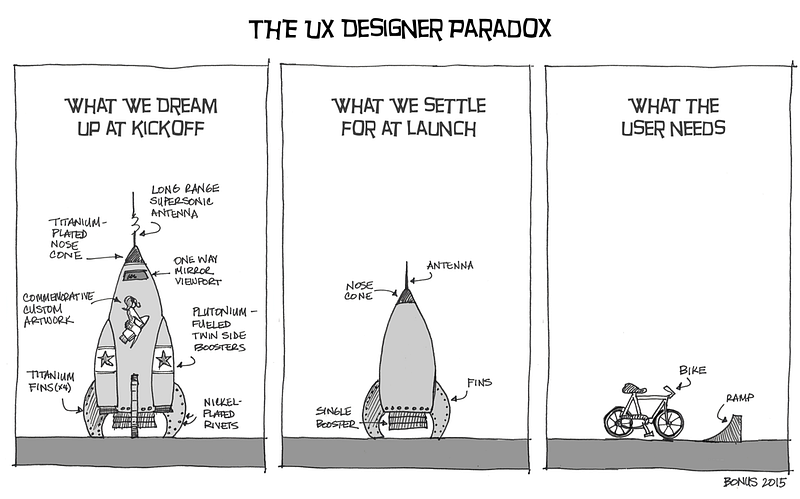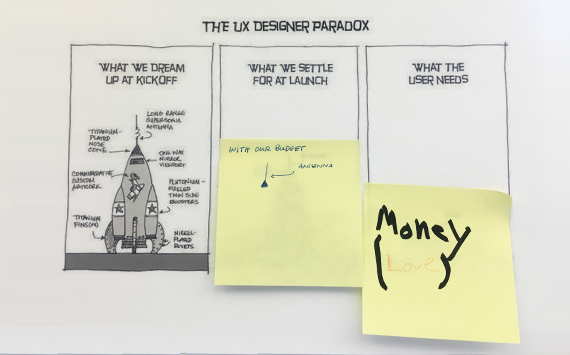
A few weeks ago, I shared a wonderful illustration by Brady Bonus that appeared in UX magazine. I share regularly on LinkedIn, and this has been by far my most liked and re-shared one.

When I come across these types of illustrations, I often print them out and paste them on my whiteboard at work. In an analog version of a social media comments thread, team members start modifying these physical posts, often poking fun at the topic. They become a conversation.
A few days ago, something interesting happened. A team member referred to the bike from the comic. He used the bike as a metaphor for the simplest solution to the problem he was presenting. To him, the bike represented the minimal viable product.
Glancing over the illustration, one sees the rockets and the bike. Most people do not see or acknowledge the ramp, making it easy to miss the problem both solutions are trying to solve: Launching.
The bike and ramp combination is by no means a minimal viable product. At least not in the way the term is sometimes used. For some, the minimal viable product is the path of least resistance, one that requires little to no work, no research, prioritization or pesky processes. If we take the problem that the designer was trying to solve (Launching) and apply this interpretation of the MVP, the solution could be as simple as jumping up, jumping off a cliff or jumping off anything that requires no human production and allows one to get off the ground.

If we do not clearly articulate the problem we are trying to solve for, we execute without a plan. These consequences are costly for the brand, for the bottom line and most importantly the team. Let’s make sure that we start all requests by asking as many questions as we need to clearly understand the problem, and commit to continuous improvement, so that the solutions we come up with take flight every time.